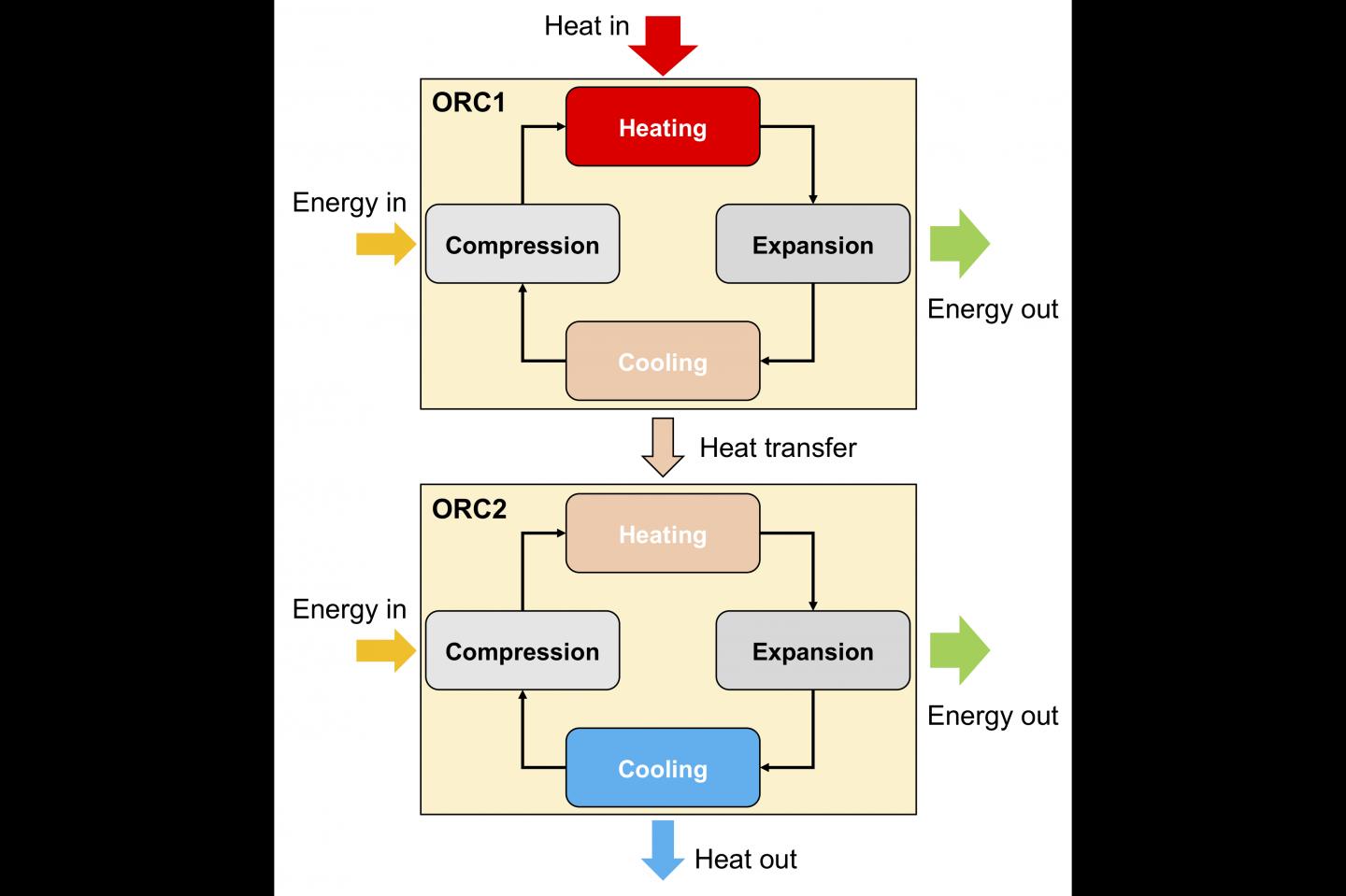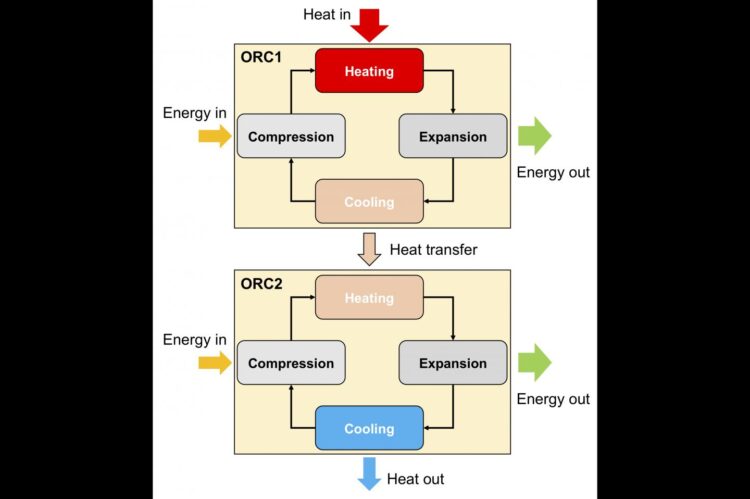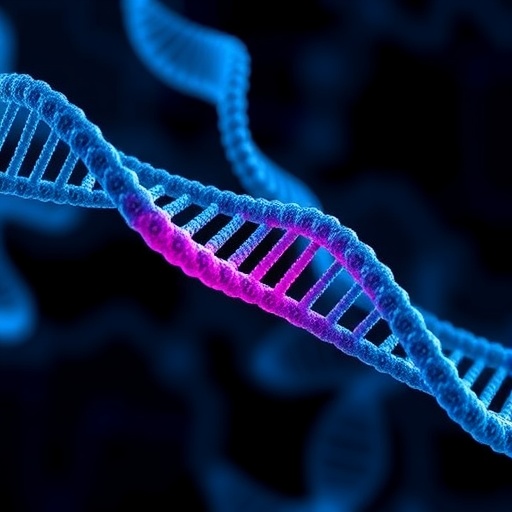In a recent research paper published in the Energy journal, City, University of London’s Dr Martin White says cascaded organic Rankine cycle systems could improve the way in which environmentally-friendly power is generated from waste heat.

Credit: Dr Martin White, City, University of London
A team from City, University of London’s Department of Engineering believes that a new approach to generating energy through waste heat could yield important insights into delivering environmentally-friendly power.
In this recent paper, Making the case for cascaded organic Rankine cycles for waste-heat recovery, published in the Energy journal, Dr Martin White has identified optimal single-stage and cascaded organic Rankine cycle systems (ORC) to maximise performance, and has designed accompanying heat exchangers.
The ORC is based on the principle of heating a liquid which causes it to evaporate, and the resulting gas can then expand in a turbine, which is connected to a generator, thus creating power. Waste heat to power organic Rankine cycle systems can utilise waste heat from a range of industrial processes in addition to existing power generation systems.
A cascaded ORC system is essentially two ORC systems coupled together, with the heat that is rejected from the first ORC being used as the input heat for the second.
However, in developing his model of a cascaded ORC system, Dr White hastens to add that there is a trade-off between performance and cost – in the case of the heat exchangers deployed, the general rule is that the better the performance, the larger and more costly the heat exchangers.
He says the trade-off can be explored through optimisation and the generation of what is called a ‘Pareto front’ – a collection of optimal solutions that considers the trade-off between two things.
If quite large heat exchangers (in this specific case, greater than around 200m2), were affordable, then for that amount of area, it is possible to generate more power with a cascaded system than a single-stage system.
However, if the size of the heat exchangers was restricted, one would probably be better off with a single-stage system.
Dr White’s results suggest that in applications where maximising performance is not the primary objective, single-stage ORC systems remain the best option. However, in applications where maximised performance is the goal, cascaded systems can produce more power for the same size heat exchangers.
His paper emerged out of his work on the NextORC project, funded by the Engineering and Physical Sciences Research Council (EPSRC).
###
Media Contact
John Stevenson
[email protected]
Original Source
https:/
Related Journal Article
http://dx.





